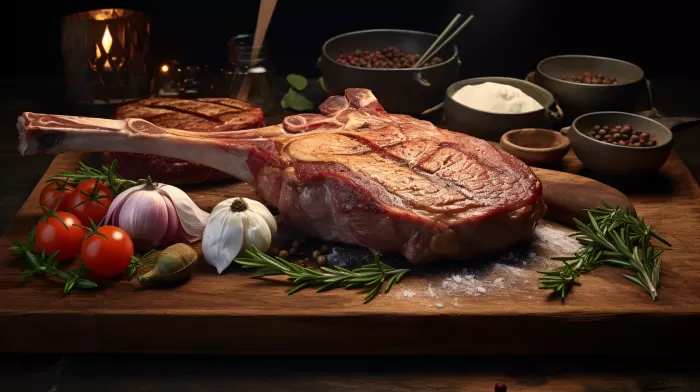When you embark on a paleo diet journey, you will be pleasantly surprised to find that the increased nutrition of paleo food is directly tied to the great taste. This fantastic taste isn’t an accident, but rather an indication of the diet’s emphasis on organic, pasture-raised meat and poultry. When you start buying your meat directly from farmers, you will discover that the taste of conventional supermarket meat just pales in comparison to the organic alternatives.
Taste Buds and Nutritional Content
The bland taste of supermarket beef, which is derived from animals that have been raised on feedlots and given minimal exercise, is no match for the tantalizing taste of free-range, organic meats. The flat taste of conventional meat is a direct reflection of its reduced nutritional content, which is worsened by the use of antibiotics and other treatments that decrease the nutritional quality and palatability of the final product.
According to researcher Kin-Chow Chang from the University of Nottingham in England, allowing animals to graze and roam freely alters their muscles and cells in ways that greatly improve their nutritional profile and taste. Free-range animals contain cellular structures and fatty acids that are much closer to the types that our ancestors consumed thousands of years ago.
Conversely, industrial farms often raise their animals in small cages and provide them with grain-based diets that contribute to a sedentary lifestyle. This results in meat that is generally of lower nutritional quality, as well as containing larger amounts of saturated fats and omega-6 fatty acids.
Red versus Fast Muscle Fibers
Chang explains that the muscles of free-range animals develop into slow muscle fibers, or oxidative/red muscle. This red muscle is the most desirable type of meat, not only because it is more tender and flavorful than the fast muscle fibers that are predominant in supermarket meat, but also because it is more nutritious. Fast muscle fibers tend to result in tougher and drier meat.
The slow muscle fibers in free-range animals are filled with more capillaries, mitochondria (energy-producing structures), and myoglobin, a dark substance that binds oxygen and iron. This provides the meat with its dark color and contributes to its better taste. These fibers grow larger in free-range animals due to their muscles’ need to use blood sugar and fatty acids for energy more efficiently. In contrast, caged animals do not need to develop these muscles, as their movement is vastly limited.
Chang also points out that the industrial farming system prioritizes speedy growth over quality, resulting in the production of bland, low-quality meat. For instance, broiler chickens raised by producers are grown for only six weeks before they are slaughtered. Consequently, their breast meat is tasteless and unmemorable.
Healthier Fat Profile
Free-range animals also produce more omega-3 fats than their factory-farmed counterparts, resulting in a healthier fat profile. Researcher Amy Devitt notes that the ratio of omega-6 to omega-3 fatty acids in the Western diet is 25-to-1. In comparison, this ratio was only 10-to-1 or 4-to-1 in prehistoric times and even before industrial farming became the norm.
This shift in fatty acid intake has incurred significant risks, as the high omega-6 to omega-3 ratio in our diets now increases the risk of atherosclerosis, certain cancers, and inflammatory diseases. On the other hand, the organic foods emphasized in the paleo diet are much denser sources of omega-3 fats, which you can taste the difference in.
It is evident that the improved taste that comes with the paleo diet is not just a luxury, but part of a balanced nutritional intake. By opting for organic, pasture-raised meats, you are giving your body the best possible fuel and enabling it to function more efficiently, all while enjoying a more savory, flavorful bite.



